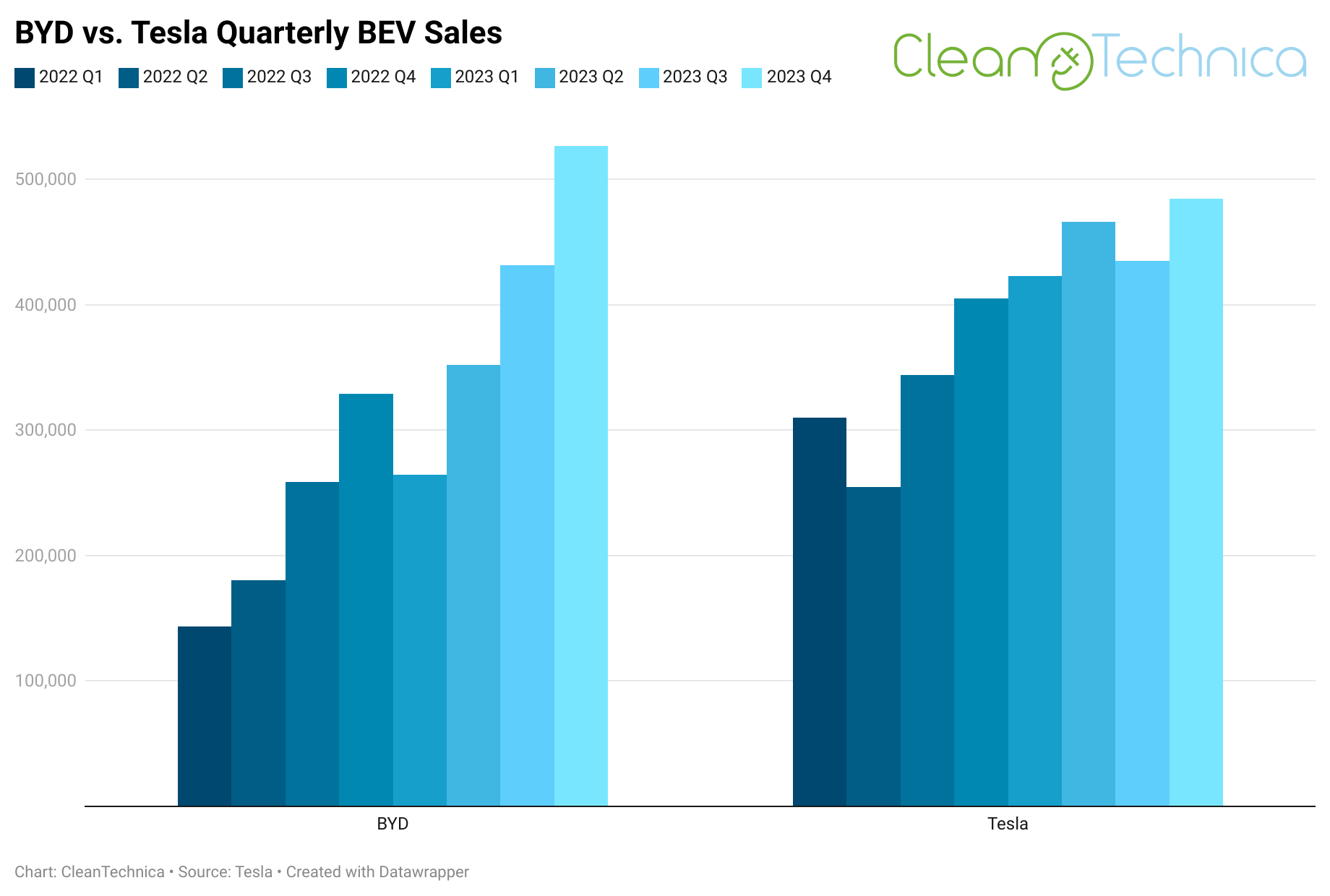Toyota–BYD Crossover? Toyota’s Akio Toyoda Off The Map On EVs, BYD Passes VW In China
We’ve got a few short news stories here from Toyota and BYD. And they highlight what could be a massive crossover in the auto world in the next several years.
Toyoda’s Shocking Position
Toyota has long been at the top or near the top of the world for auto sales. It led the way with conventional hybrids, mostly through the iconic Prius, but also through other models in time. As we’ve pointed out before, it’s often the leaders of one technological transition who are the laggards of the last one, especially if they cling too hard to their leadership position and try to deny the changes happening in front of them. For years, we’ve circled Toyota as a potential culprit in this regard when it comes to the EV era. Recently, it has seemed that Toyota may finally get on board and shift to producing electric vehicles at high volumes and gradually transitioning to 100% EVs. We’ve even conceded that perhaps Toyota did time it perfectly and will retain its crown through all of this. Now, however, Toyota Chairman Akio Toyoda has thrown a wrench in the discussion again.
Toyoda said at a business meeting this month that he sees full battery electric vehicles only reaching 30% market share by 2030. WHAT?!?!
So, Mr. Toyoda is off the map again, off on a tiny island all on his own. Or, if any other auto execs are on the island with him, they’re at least keeping quiet and not broadcasting their position.
Frankly, I find it astounding. Even if he thinks there will be some share of conventional hybrids, full gas-powered vehicles, hydrogen fuel cell vehicles, and full battery-electric vehicles (BEVs), putting BEVs at just 30% is jaw dropping. It seems that Toyoda is completely blinded by what is happening. BEVs are already at 13% market share globally, and plugin vehicles at 19% market share. It’s a hop, skip, and a jump to 30% market share, and there’s no reason it should stop there — in fact, there are clear technological learning curve and adoption curve explanations for why BEVs will blow past that market share. Even if there are ups and downs related to changes in government policies, progress will march on.
 Chip in a few dollars a month to help support independent cleantech coverage that helps to accelerate the cleantech revolution!
Chip in a few dollars a month to help support independent cleantech coverage that helps to accelerate the cleantech revolution!
BYD’s Rise Continues
At the same time that Toyota is waffling on EVs and Toyoda is spouting extreme EV pessimism, BYD, which became a 100% plugin vehicle producer a couple of years ago, continues to rapidly rise up the sales ranking. The automaker became the top seller of BEVs globally in the 4th quarter, and has long led in plugin vehicle sales. The company also notes that it is now one of the 10 top selling automakers in the world. Tesla is also right up there in BEV sales and will likely take back the title in Q1 2024 (temporarily), but to highlight how fast BYD is growing, check out this comparison growth chart:
Or this one:
With that strong rise in sales, particularly in its home region of China, news is that BYD also just passed Volkswagen in annual auto sales in China. So, we’re already seeing a monumental crossover in the biggest auto market in the world, China. What’s BYD’s next target?
BYD–Toyota Crossover?
It’s true that BYD is still far away from reaching Toyota’s annual sales total. But the market is not static. In fact, it’s changing fast. Don’t think for a second that China’s auto market, which is at 27% BEV market share, is going to sit there. Don’t think for a second that Europe’s auto market, which is at 17% BEV market share, is going to sit there. Don’t think that the US EV market is going to remain below 10% BEV market share. BEV sales are going to grow, and what we’re learning is that those are definitely going to come more and more from BYD, and as far as Toyota, well, we don’t have nearly as much confidence in that.
It may be early to talk about this, but one has to assume that BYD can pass up Toyota in time if both companies keep going down the roads they’re going down. Can this crossover happen by 2025? No, not really. Can this crossover happen by 2027? Maybe. … Can this crossover happen by 2030? Probably. There are a lot of factors at play, including how Toyota adapts as the market continues to change and how well big new markets warm up to BYD and thus give it more and more share of their auto markets. If I was forced to put my money on one of these companies selling more vehicles than the other in 2030, I think I would have to put it on BYD. That sounds crazy, but it’s also easy to see BYD growing to several million vehicle sales a year and Toyota dropping by a few million sales a year. We shall see.
Have a tip for CleanTechnica? Want to advertise? Want to suggest a guest for our CleanTech Talk podcast? Contact us here.
Latest CleanTechnica.TV Video

CleanTechnica uses affiliate links. See our policy here.



